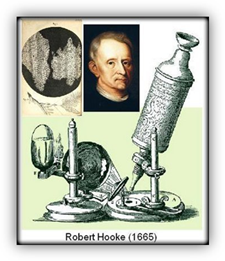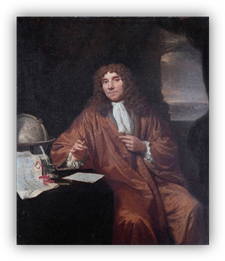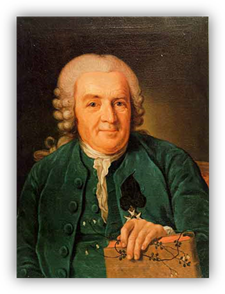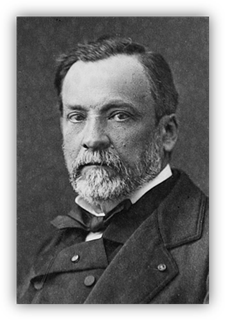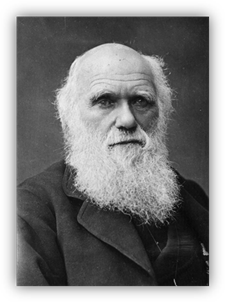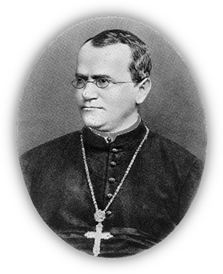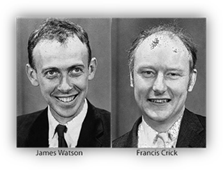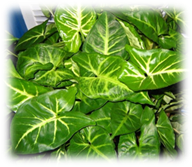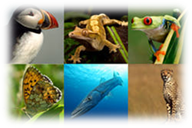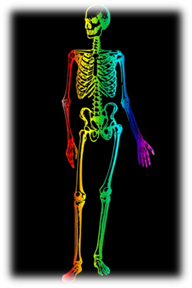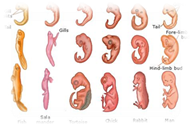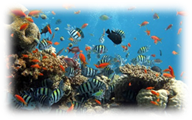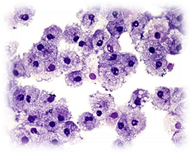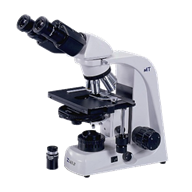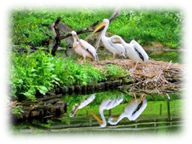Course
Overview
This course emphasizes the concepts,
principles, and theories that enable people to understand the living environment.
Students will study life science concepts such as the structure, function, and
processes of cells, the genetic and molecular basis of inheritance, biological
evolution of various species, and the diversity and interdependence of life.
Students will also be able to explain the flow of energy and the cycling of
matter through biological and ecological systems in this course. Embedded throughout this study are the basic
scientific processes of inquiry, modeling investigations, and the nature of science.
Students will learn to trace the historical development of scientific theories,
ideas, and ethical guidelines in science. This course will also address the
interdependence of science and technology, and the study of emerging issues to
become scientifically literate citizens.
For each unit, the student will read
the content that is presented, look at each illustration, watch all video
clips, and follow all external web links.
Answer the questions for each unit as completely as possible. The student may be required to do independent
research and to find information on their own.
Other resources may be used to enhance the material that is presented in
order to answer the questions.
Try to keep a reasonable pace with
each of the units. Some units may
require lengthy preparation while others are shorter in length. It would be beneficial not to leave any
questions blank. If you have any
questions, please ask the VLA instructor for guidance.
INTRODUCTION
TO BIOLOGY
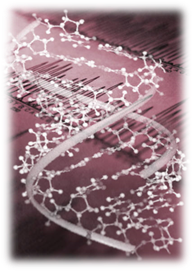
![]() Basics of Biology: What is Life?
Basics of Biology: What is Life?
What is
Biology?
![MPj04097030000[1]](SCIBBIOU01_Biology_History_image005.jpg) Welcome to biology!
The goal of science is to help us understand the natural world and
improve people’s lives. Biology is a branch of science which involves the
study of life. All of the processes
associated with living organisms are the subject matter of biology. Biology is the study of all aspects of living
things including their structure, classification, function, and
interactions. As a student in this
course, you will strive to understand the natural phenomena associated with
plants and animals by asking why and how the natural world functions as it
does. Why do living organisms interact
with each other and their environment in particular ways? What are their evolutionary and genetic
relationships? How are biological
processes carried out in organs, tissues, and cells? In order to answer these broad questions,
biologists must answer many specific ones:
How does the liver of an animal break down fat? How does a green plant convert water and
carbon dioxide into sugar? When do platypuses lay their eggs? Where do mosquitoes go in the winter? Some questions require years of scientific
research before they can be answered satisfactorily. Continually asking questions and conducting
studies leads toward a better understanding of all organisms and the
environment.
Welcome to biology!
The goal of science is to help us understand the natural world and
improve people’s lives. Biology is a branch of science which involves the
study of life. All of the processes
associated with living organisms are the subject matter of biology. Biology is the study of all aspects of living
things including their structure, classification, function, and
interactions. As a student in this
course, you will strive to understand the natural phenomena associated with
plants and animals by asking why and how the natural world functions as it
does. Why do living organisms interact
with each other and their environment in particular ways? What are their evolutionary and genetic
relationships? How are biological
processes carried out in organs, tissues, and cells? In order to answer these broad questions,
biologists must answer many specific ones:
How does the liver of an animal break down fat? How does a green plant convert water and
carbon dioxide into sugar? When do platypuses lay their eggs? Where do mosquitoes go in the winter? Some questions require years of scientific
research before they can be answered satisfactorily. Continually asking questions and conducting
studies leads toward a better understanding of all organisms and the
environment.
We know from the previous paragraph
that a biologist asks specific questions.
Obviously, the next question will be …. What is a biologist? A biologist, quite simply, studies living
things and their relationship to their environment. There are many types of biologists such as: marine biologists, aquatic biologists,
forensic biologists, and environmental biologists, just to name a few. What do biologists really do? They ask questions such as what, why, and
how. Asking questions is the basis of
scientific thought which also requires skepticism. Skepticism is a doubting
attitude that questions the truth of some idea or event. Biologists study
problems and how they might be solved, how living organisms are organized in
groups, the process of reproduction, growth and change, adaptations,
interactions with the environment, genetics, and evolution.
Historical
Perspectives in Biology
Next, we will take a look at some
famous historical biologists and their contributions to the field of biology.
Many modern discoveries are based
upon the work completed somewhere in the history of biology. Often a small change in an existing thought
or an accidental occurrence can lead to new findings.
Great scientific progress was made
in the 19th century. This progress resulted from the application of what was
already known, plus new discoveries of a basic nature. The following is a very
brief list of some of the most important discoveries in biology.
|
|
Robert
Hooke |
·
In 1665, Hooke, an English scientist, used a simple
microscope (magnification of 30 times) to look at a thin slice of cork. ·
He saw many “little boxes” in the cork slice. ·
The boxes reminded Hooke of the small rooms (cells)
that monks lived in, so he called these little boxes “cells”. |
|
|
Anton
van Leeuwenhoek |
·
In 1675, Leeuwenhoek, a Dutch scientist, used a more
powerful microscope (magnification of 300 times), to discover many living
creatures in pond water. ·
The small organisms he saw under a microscope he
named animalcules or “tiny animals”. ·
Leeuwenhoek is nicknamed the “Father of
Microbiology” because he was the first to see unicellular organisms. |
|
|
Carl
Linnaeus |
·
In the 1750’s, Linnaeus, a Swedish biologist,
developed a classification system for all living things (organisms). ·
Linnaeus’ classification system, based on Binomial
Nomenclature, was necessary because it provided a simple method of
consistently classifying organisms based on similar structures. |
|
|
Louis
Pasteur |
·
Pasteur was a 19th century French scientist. ·
In 1862, Pasteur disproved the idea of “Spontaneous
Generation”, which is the idea of living organisms developing from non-living
items. A popular belief before the 19th century. ·
In 1864, Pasteur created the process known as “Pasteurization”
which is the process of heating and cooling a liquid to kill many of the
microorganisms within the liquid. ·
In 1879, Pasteur proved that microorganisms cause
various diseases and created some of the first vaccines by extending the work
of Edward Jenner’s (1796) small pox vaccine. |
|
|
Charles
Darwin |
·
Darwin was a 19th century British
naturalist. ·
In 1859, Darwin created a theory of evolution which
science has adopted. ·
Darwin developed his theory while making
observations on his journey to the Galapogos
Islands aboard the ship named HMS Beagle. ·
Darwin’s theory of evolution is known as “Natural
Selection”. ·
Darwin wrote a book explaining his theory of Natural
Selection titled Origin of Species in 1859. |
|
|
Gregor
Mendel |
·
Mendel was a 19th century Austrian monk. ·
Mendel’s responsibility living in the monastery was
that of a gardener. ·
Working with pea plants, Mendel began studying and
predicting the passing of traits from parent pea plants to offspring pea
plants. ·
Mendel’s work led to the development of genetics |
|
|
James
Watson and Francis Crick |
·
In 1953, James Watson, American biologist, and
Francis Crick, British biologist, worked together to discover the structure
and function of DNA, after examining the progressive DNA work of many earlier
scientists. ·
Watson and Crick’s model of DNA explained how DNA
stored and passed hereditary information. |
Biological Areas of
Study
Next, we will look at some of the
major areas/studies of biology which focus on a specific biological topic.
|
|
Botany |
|
|
|
Zoology |
Zoology
is the study of animals and animal life in general. It includes the inquiry into
individual animals, animal populations, and the relationships of animals to
each other, to plants, and to the nonliving environment. |
|
|
Anatomy and Physiology |
Anatomy
is the study of structure or how organisms are organized on the cellular,
tissue, organ, system, or organism levels. Physiology is the study of
function or how organisms perform functions on the cellular, tissue, organ,
system, or organism level. |
|
|
Embryology |
Embryology
is the study of the formation and development of an embryo and fetus.
Studying embryology allows for detailed comparisons of different animals to
provide arguments for evolutionary relationships among different species. |
|
|
Marine Biology |
|
|
|
Cytology |
Cytology
is the study of cells, both in structure and function, as the fundamental
units of living things. |
|
|
Microbiology |
|
|
|
Ecology |
Ecology
is the study of the relations and interactions between organisms and their
environment both living and nonliving. |
UNIT VOCABULARY
REVIEW
Click on the Quizlet icon below to access the quizlet.com vocabulary flash
cards. Review the vocabulary before completing your assessment.
 Now answer questions 1 through 25.
Now answer questions 1 through 25.
